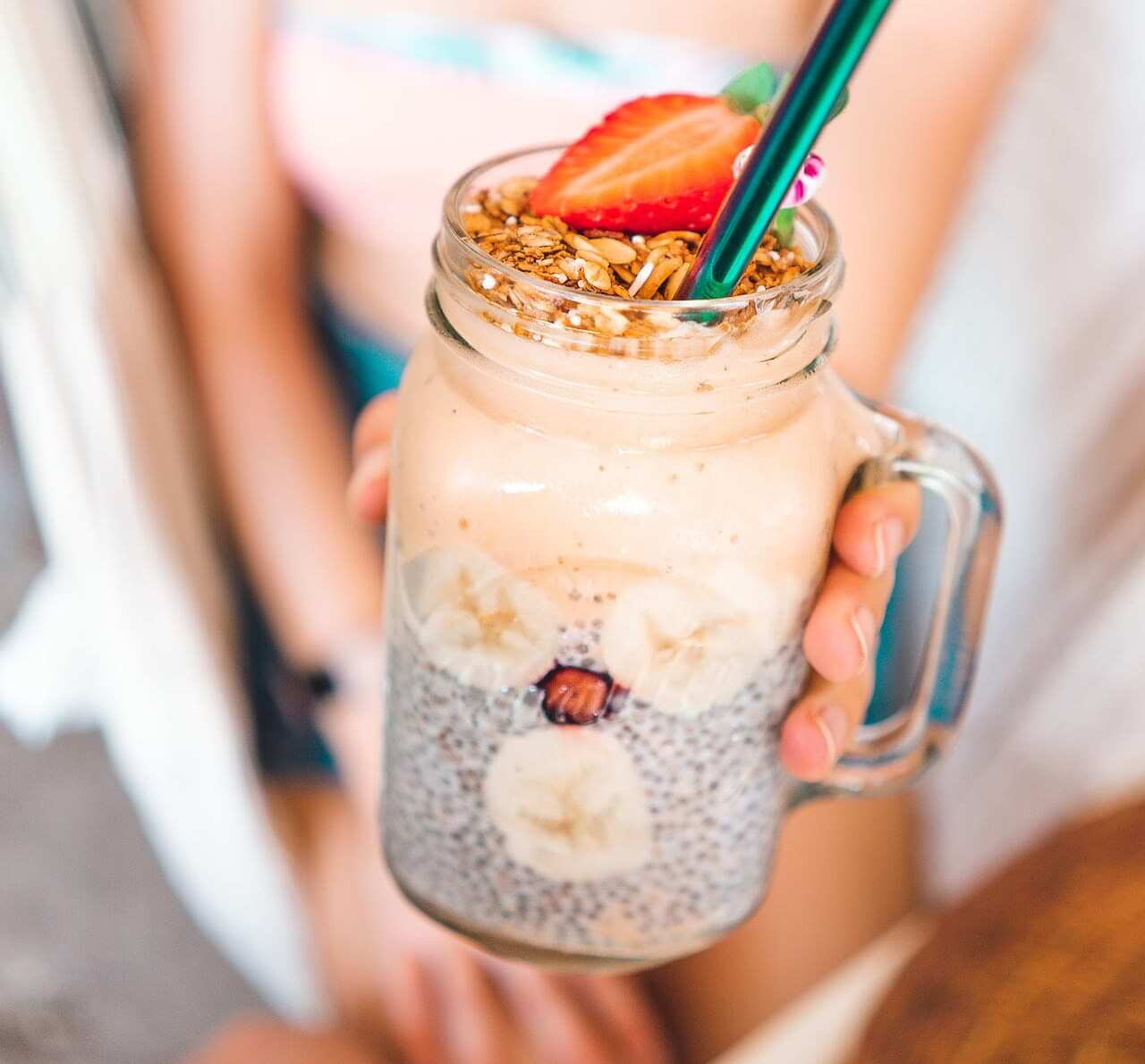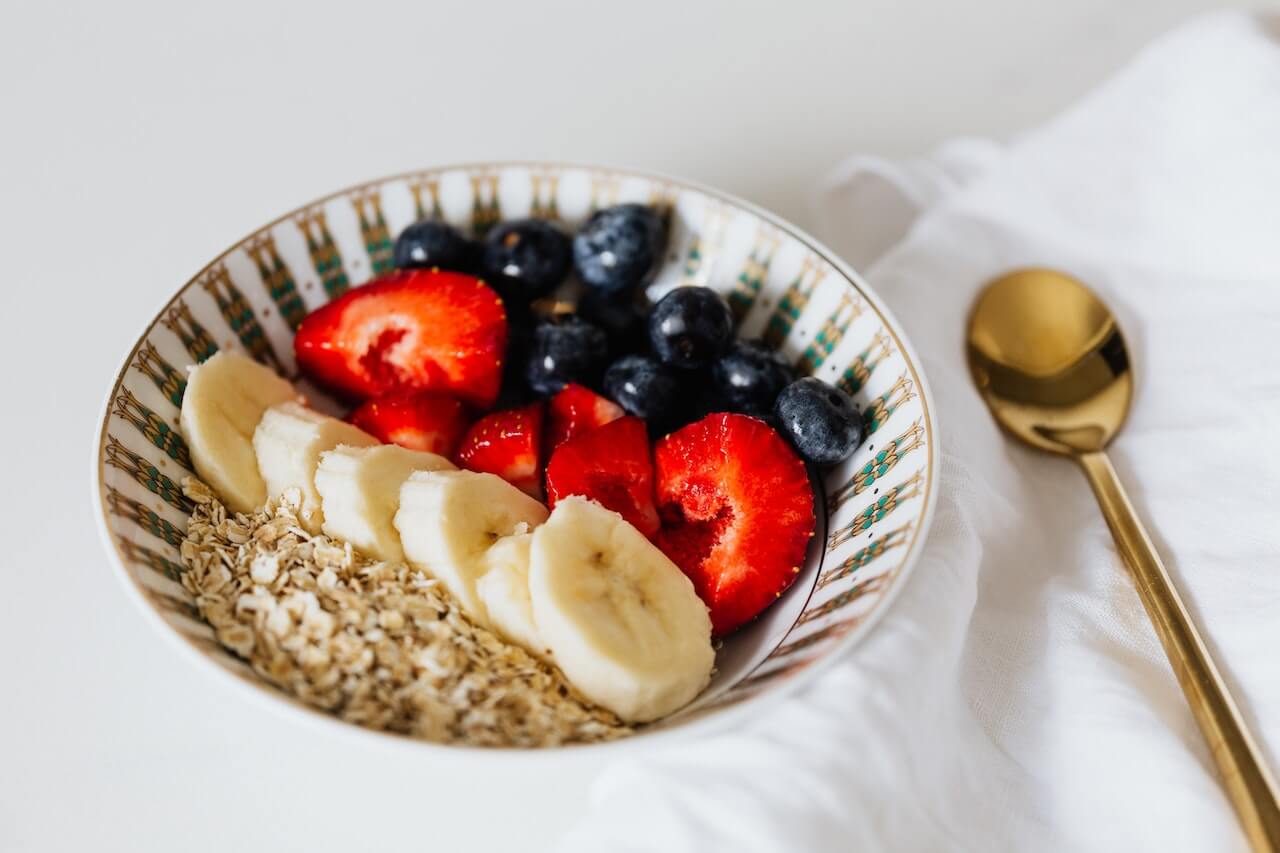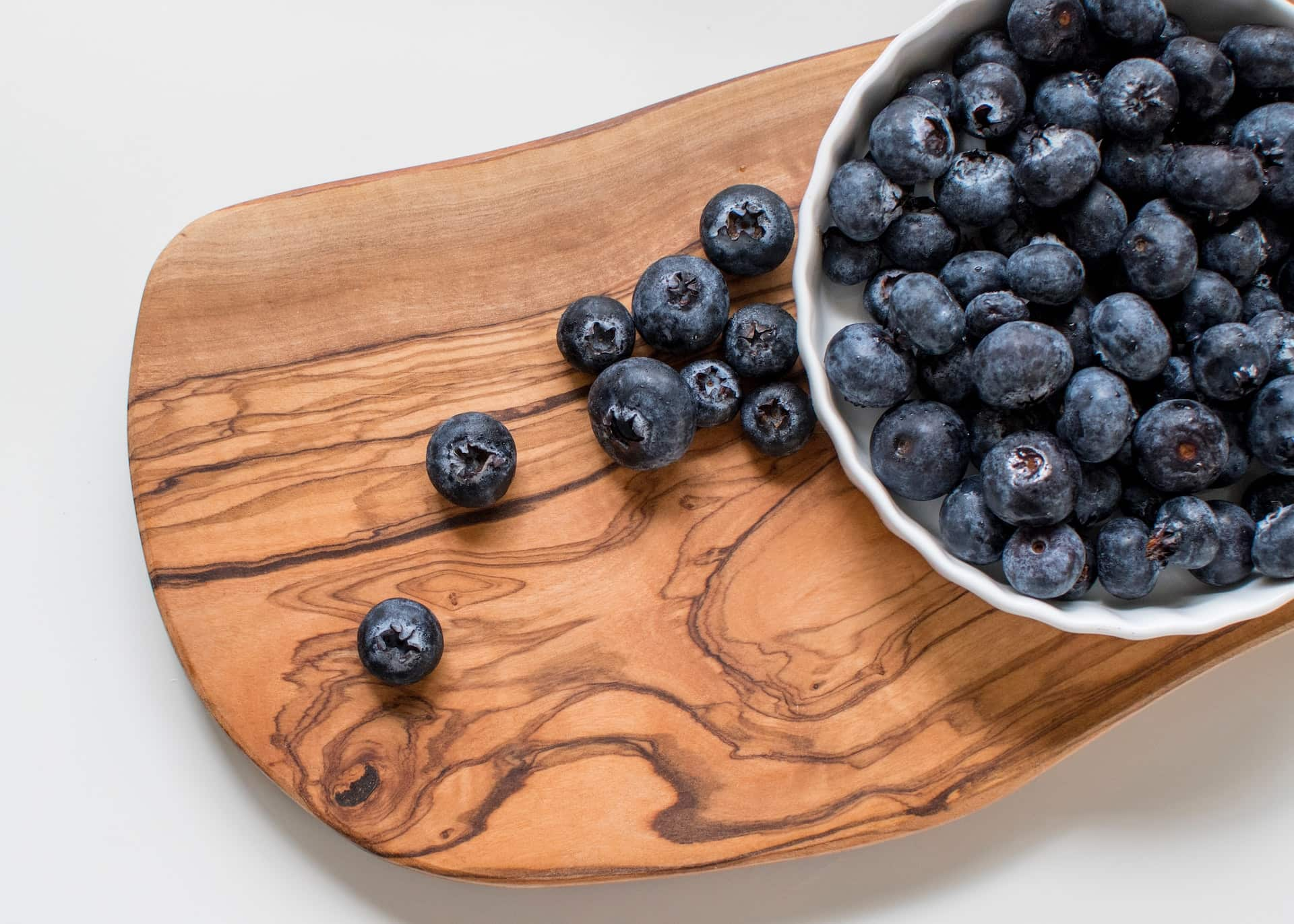High blood pressure, or hypertension, is a serious condition that can lead to heart disease, stroke, and other serious health problems. According to the American Heart Association, nearly half of American adults have high blood pressure.¹ And yet, many people don't even know they have it.
Here's the good news: lifestyle changes can help lower your blood pressure and improve your overall health—especially your diet.
Food can directly impact blood pressure by providing nutrients and even chemical compounds that help lower or manage blood pressure more effectively. Below we'll explore 19 foods that can help lower blood pressure, plus a few extra lifestyle tips for keeping your blood pressure in check.
How Can Food Affect Blood Pressure?
With so many people diagnosed with high blood pressure, you'd think there would be more push for preventative care, like making dietary changes that could help lower blood pressure and improve overall health. Unfortunately, that's not always the case.
The reality is what you eat has a direct impact on blood pressure. We've known this for some time thanks to a study published more than 20 years ago highlighting the Dietary Approaches to Stop Hypertension (DASH) diet.⁴
The DASH diet isn't simply about lowering salt intake—which many people focus on when they think about foods that affect blood pressure. It's a well-rounded approach to eating that includes foods rich in nutrients like potassium, calcium, fiber, and magnesium. Potassium helps remove sodium from the body, while magnesium may help relax blood vessels and improve blood flow.⁵,⁶
Research consistently highlights the positive effect on blood pressure after following this pattern across a diverse population, both with and without hypertension.⁷
Foods highlighted on the DASH diet include:
- Fruits and vegetables
- Whole grains
- Low-fat dairy foods
- Poultry and lean meats
- Fish
- Nuts and seeds
- Beans
The DASH diet also limits foods like sweets, sugary drinks, red meat, and saturated fats. It doesn't have a caloric limit, but it focuses more on quality over quantity.

18 Best Foods For High Bloog Pressure
These foods are the MVPs for healthy blood pressure, and the good news is that they taste good too.
1. Citrus fruits
Brightly colored oranges, lemons, and grapefruit are usually linked to immune health, but they also happen to be foods that lower blood pressure. Studies link these fruits to reductions in blood pressure thanks to the vitamins, minerals, and flavonoids,a type of antioxidant that may protect blood vessels from damage.⁸
Add more citrus fruit to your diet by squeezing fresh lemon or lime juice on foods, eating a grapefruit for breakfast or snack, or enjoying an orange as a dessert. Be careful about juices because even though they're made with fruit, they can have a high sugar content that raises blood sugar.
2. Fatty fish
Fatty fish like salmon or sardines contain omega-3 fatty acids, which can help lower blood pressure by decreasing inflammation throughout the body. Higher levels of omega-3 fatty acids in the blood are linked to healthier blood pressure numbers.⁹
Lowering inflammation in the blood vessels allows for better blood flow and protects against damage.
You can roast salmon as a simple dish, but canned sardines or wild salmon can also be prepared similar to tuna for an omega-3-rich topping to a salad or whole-grain toast.
3. Nuts
Most nuts contain magnesium and potassium, which, as you learned above, are essential for blood pressure. Studies on nuts show they are helpful for cardiovascular protection and metabolic health, including blood pressure and blood sugar levels.¹⁰,¹¹
Nuts are easy to grab as a snack but can also be used as a topping for salads, oatmeal, or yogurt.
4. Legumes
Legumes include foods like black beans, lentils, chickpeas, and split peas. They're rich in fiber, magnesium, potassium, and protein—all nutrients essential for blood pressure. In fact, foods like lentils have been linked to a decrease in both systolic and diastolic blood pressure.¹²
Bump up your intake of these foods by adding cooked legumes to salads or grain bowls, using black beans in tacos or burritos, or making lentil soup.
5. Berries
Anytime a fruit or vegetable has a vibrant color, it's a clue that it contains antioxidants, which, as you now know, can help protect blood vessels from damage. Blueberries get a lot of press for their antioxidant content and possible health benefits, but other berries like raspberries, strawberries, and blackberries also contain compounds to protect your heart.
Anthocyanins, a phytochemical found in berries, may help lower blood pressure by reducing free radical damage and molecules that constrict blood vessels while increasing nitric oxide.¹³ Nitric oxide is a molecule that helps blood vessels relax and dilate.
You may not need help eating more berries—they are delicious on their own—but you can try adding them to smoothies, yogurt, oatmeal, or even in a salad.
{{mid-cta}}
6. Yogurt
Creamy, protein-rich yogurt can help lower blood pressure, primarily because it contains calcium and magnesium. Dairy, in general, is linked to lower blood pressure, but if you aren't a milk drinker, yogurt is also associated with a significantly reduced risk of hypertension.¹⁴,¹⁵
Choose Greek yogurt for higher protein content, and look out for added sugar. If you need extra sweetness, top your yogurt with a little honey and berries to get even more blood pressure-lowering benefits.
7. Leafy Greens
Probably no surprise that leafy greens are on this list, but they're here for a good reason. Spinach, in particular, also contains higher levels of nitrates, which are converted to nitric acid in your body to help lower blood pressure.¹⁶
Even a half cup a day can help, so add kale, spinach, chard, beet greens, or romaine to your daily rotation. You can saute, steam, or eat raw in a salad.
8. Oats
Fiber-rich oats are known for their heart health benefits, and one of the ways they help is by reducing blood pressure. Oats contain beta-glucan, a soluble fiber that helps reduce cholesterol levels and inflammation.¹⁷ One study found that adding an oat-based cereal significantly lowered blood pressure and, as a bonus, supported insulin sensitivity.¹⁸
Oatmeal is the obvious go-to, but for some people, oatmeal alone isn't quite enough to satisfy them and can even lead to big blood sugar rises. Try eating protein with your oats, like adding an egg or topping with yogurt or nut butter.

9. Pomegranate
Ever tried removing those tiny pomegranate seeds (called arils) from the fruit? It's a tedious task but so worth it for your blood pressure and heart health. Pomegranate could help lower blood pressure by reducing oxidative stress and inflammation while supporting nitric oxide levels.¹⁹
Snack on pomegranate seeds along with protein, or make a smoothie with half water and half pomegranate juice to get a filling drink that's still low in sugar.
10. Whole grains
Whole grains are an essential part of the DASH diet, and many studies illustrate just how beneficial they can be for blood pressure.¹⁴ Research suggests that eating whole grains more often reduces the risk of developing hypertension.²⁰
Amaranth, quinoa (technically a seed but often lumped in with grains), buckwheat, millet, farro, and brown rice are all excellent choices. You can add more whole grains as a side dish for your meal, where one-quarter of your plate should be grains, or make them the star of the show in a grain bowl with veggies, healthy fats, and protein on top.
11. Garlic
This humble ingredient is a powerhouse when it comes to foods that help lower blood pressure. It may help by reducing inflammation, improving endothelial function, and acting as an antioxidant.²¹ Studies also suggest that garlic supplements can significantly improve blood pressure.²²
Add garlic to stir-fries, pasta dishes, or salad dressings. If you are considering a supplement, check in with your doctor because garlic can interact with some medications.
12. Carrots
Carrots are rich in fiber, antioxidants, and potassium, making them one of the foods that help lower blood pressure. One study showed that people who ate more carrots had a lower risk of developing hypertension.²³
Eat them raw as a snack with hummus, or add them to a salad. Try roasting carrots with a little ginger and cinnamon for a sweet treat.
13. Broccoli
Like other cruciferous vegetables, broccoli is high in fiber and antioxidants. It also contains compounds that may help lower blood pressure by relaxing blood vessels and reducing inflammation. One study found that people who ate at least 4 servings of broccoli a week had a lower risk of hypertension than those who consumed less.²⁴
Try roasting broccoli with a bit of olive oil and garlic to make a delicious side dish. You can also add it to soups or stir-fries.
14. Bananas
Since bananas are one of the best sources of potassium, they also make an excellent choice for blood pressure. Some research has found an inverse association between banana intake and diastolic blood pressure.²⁵
Enjoy a banana as a quick snack, or add it to oatmeal, yogurt, or a smoothie. Bananas can lead to higher blood sugar levels for some people, but adding healthy fats or protein can help offset that effect.
15. Tomato
Lycopene, an antioxidant found in tomatoes, may help lower blood pressure by reducing oxidative stress and inflammation.²⁶ Studies show that those who eat more tomato and tomato products, like pasta sauce, have healthier blood pressure which translates to a reduced risk of heart disease.²⁷
Add fresh tomatoes to salads or sandwiches, or cook them into pasta sauces, soups, or stews.
16. Seeds
Seeds are rich in fiber, minerals, and nutrients like magnesium that can help lower blood pressure. Chia and flax seeds also contain omega-3 fatty acids to lower inflammation.²⁸ One small study found that chia seed flour supported healthy blood pressure.²⁹
Add seeds to oatmeal or yogurt, sprinkle them on top of salads or soup, or use them to make homemade energy bars or seed butter.
17. Beets
Beets are rich in nitrates (like spinach) which helps improve blood vessel function and lower blood pressure.³⁰ Several studies have found that people who drank beetroot juice significantly decreased their blood pressure.³¹
Add beets to salads or roasted vegetables, or you can try drinking beetroot juice or adding it to smoothies.
18. Dark Chocolate
Ending the list of foods that help lower blood pressure is a delicious one - dark chocolate. Flavonoids, antioxidants in dark chocolate, may help improve endothelial function and reduce inflammation.³²
Choose dark chocolate with a high cocoa content (70% or higher) and enjoy it in moderation.
Some Foods You Should Avoid For Blood Pressure
- Sodium. While it's not the only nutrient that affects blood pressure, studies show that even moderately cutting back on sodium can help.³³
- Caffeine. Drinking too much caffeine can cause an increase in blood pressure for some people.³⁴ If you're sensitive to caffeine, limiting your intake or avoiding it altogether is worth considering.
- Alcohol. A glass of wine or beer here and there is usually fine, but even drinking moderately can increase blood pressure.³⁵ If you drink alcohol, save it for special occasions.
- Red meat. Red meat is linked with higher blood pressure, possibly due to inflammation, although the reasons aren't exactly clear. If you eat red meat, choose leaner cuts and keep it to a few times a month.
- Sugar. Studies link sugar, especially from processed foods, to an increased risk of hypertension.³⁶

Other Ways to Manage Blood Pressure
Aside from diet, other lifestyle factors that contribute to blood pressure levels include:
- Move your body regularly
- Prioritize sleep
- Manage stress
- Quit smoking
- Ask for help from a dietitian, doctor, or another health professional
FAQs on How to Lower Blood Pressure
- Is medication always needed to lower blood pressure? While medication may be necessary for people with severe hypertension, lifestyle changes can help lower blood pressure for people with mild or moderate hypertension. That said, always check with your doctor before changing your medications.
- What should I do if my blood pressure is high? If your blood pressure is high, it's essential to see a doctor or other health professional so they can help you manage it. They may recommend lifestyle changes, medications, or other treatments.
Manage Blood Sugar for Blood Pressure Health
Higher than normal blood sugar can damage the lining of your arteries, making it harder for your blood to flow smoothly. A continuous glucose monitor (CGM) paired with the Signos app can help you manage your blood sugar and lower your risk for high blood pressure.
CGMs track your blood sugar in real time, so you can quickly identify patterns and make changes to your diet or lifestyle to keep your blood sugar in a healthy range. When you connect your CGM to the Signos app, it provides personalized recommendations for foods and activities based on your individual blood sugar patterns. By making small changes to your routine, you can make a big impact on your blood pressure health.
- Item 1
- Item 2
- item 3
Topics discussed in this article:
References
- Centers for Disease Control and Prevention (CDC). (2019). Hypertension cascade: hypertension prevalence, treatment and control estimates among US adults aged 18 years and older applying the criteria from the American College of Cardiology and American Heart Association’s 2017 Hypertension Guideline—NHANES 2013–2016. Atlanta, GA: US Department of Health and Human Services.
- https://www.cdc.gov/bloodpressure/facts.htm#
- https://www.who.int/news-room/fact-sheets/detail/hypertension
- Appel, L. J., Moore, T. J., Obarzanek, E., Vollmer, W. M., Svetkey, L. P., Sacks, F. M., Bray, G. A., Vogt, T. M., Cutler, J. A., Windhauser, M. M., Lin, P. H., & Karanja, N. (1997). A clinical trial of the effects of dietary patterns on blood pressure. DASH Collaborative Research Group. The New England journal of medicine, 336(16), 1117–1124. https://doi.org/10.1056/NEJM199704173361601
- Ellison, D. H., & Terker, A. S. (2015). Why Your Mother Was Right: How Potassium Intake Reduces Blood Pressure. Transactions of the American Clinical and Climatological Association, 126, 46–55.
- Houston M. (2011). The role of magnesium in hypertension and cardiovascular disease. Journal of clinical hypertension (Greenwich, Conn.), 13(11), 843–847. https://doi.org/10.1111/j.1751-7176.2011.00538.x
- Steinberg, D., Bennett, G. G., & Svetkey, L. (2017). The DASH Diet, 20 Years Later. JAMA, 317(15), 1529–1530. https://doi.org/10.1001/jama.2017.1628
- Asgary, S., & Keshvari, M. (2013). Effects of Citrus sinensis juice on blood pressure. ARYA atherosclerosis, 9(1), 98–101.
- Filipovic, M. G., Aeschbacher, S., Reiner, M. F., Stivala, S., Gobbato, S., Bonetti, N., Risch, M., Risch, L., Camici, G. G., Luescher, T. F., von Schacky, C., Conen, D., & Beer, J. H. (2018). Whole blood omega-3 fatty acid concentrations are inversely associated with blood pressure in young, healthy adults. Journal of hypertension, 36(7), 1548–1554. https://doi.org/10.1097/HJH.0000000000001728
- Djoussé, L., Rudich, T., & Gaziano, J. M. (2009). Nut consumption and risk of hypertension in US male physicians. Clinical nutrition (Edinburgh, Scotland), 28(1), 10–14. https://doi.org/10.1016/j.clnu.2008.08.005
- Khalili, L., A-Elgadir, T., Mallick, A. K., El Enshasy, H. A., & Sayyed, R. Z. (2022). Nuts as a Part of Dietary Strategy to Improve Metabolic Biomarkers: A Narrative Review. Frontiers in nutrition, 9, 881843. https://doi.org/10.3389/fnut.2022.881843
- Jayalath, V. H., de Souza, R. J., Sievenpiper, J. L., Ha, V., Chiavaroli, L., Mirrahimi, A., Di Buono, M., Bernstein, A. M., Leiter, L. A., Kris-Etherton, P. M., Vuksan, V., Beyene, J., Kendall, C. W., & Jenkins, D. J. (2014). Effect of dietary pulses on blood pressure: a systematic review and meta-analysis of controlled feeding trials. American journal of hypertension, 27(1), 56–64. https://doi.org/10.1093/ajh/hpt155
- Vendrame, S., & Klimis-Zacas, D. (2019). Potential Factors Influencing the Effects of Anthocyanins on Blood Pressure Regulation in Humans: A Review. Nutrients, 11(6), 1431. https://doi.org/10.3390/nu11061431
- Schwingshackl, L., Schwedhelm, C., Hoffmann, G., Knüppel, S., Iqbal, K., Andriolo, V., Bechthold, A., Schlesinger, S., & Boeing, H. (2017). Food Groups and Risk of Hypertension: A Systematic Review and Dose-Response Meta-Analysis of Prospective Studies. Advances in nutrition (Bethesda, Md.), 8(6), 793–803. https://doi.org/10.3945/an.117.017178
- Buendia, J. R., Li, Y., Hu, F. B., Cabral, H. J., Bradlee, M. L., Quatromoni, P. A., Singer, M. R., Curhan, G. C., & Moore, L. L. (2018). Long-term yogurt consumption and risk of incident hypertension in adults. Journal of hypertension, 36(8), 1671–1679. https://doi.org/10.1097/HJH.0000000000001737
- Jovanovski, E., Bosco, L., Khan, K., Au-Yeung, F., Ho, H., Zurbau, A., Jenkins, A. L., & Vuksan, V. (2015). Effect of Spinach, a High Dietary Nitrate Source, on Arterial Stiffness and Related Hemodynamic Measures: A Randomized, Controlled Trial in Healthy Adults. Clinical nutrition research, 4(3), 160–167. https://doi.org/10.7762/cnr.2015.4.3.160
- El Khoury, D., Cuda, C., Luhovyy, B. L., & Anderson, G. H. (2012). Beta glucan: health benefits in obesity and metabolic syndrome. Journal of nutrition and metabolism, 2012, 851362. https://doi.org/10.1155/2012/851362
- Keenan, J. M., Pins, J. J., Frazel, C., Moran, A., & Turnquist, L. (2002). Oat ingestion reduces systolic and diastolic blood pressure in patients with mild or borderline hypertension: a pilot trial. The Journal of family practice, 51(4), 369.
- Zarfeshany, A., Asgary, S., & Javanmard, S. H. (2014). Potent health effects of pomegranate. Advanced biomedical research, 3, 100. https://doi.org/10.4103/2277-9175.129371
- Kashino, I., Eguchi, M., Miki, T., Kochi, T., Nanri, A., Kabe, I., & Mizoue, T. (2020). Prospective Association between Whole Grain Consumption and Hypertension: The Furukawa Nutrition and Health Study. Nutrients, 12(4), 902. https://doi.org/10.3390/nu12040902
- Matsutomo T. (2020). Potential benefits of garlic and other dietary supplements for the management of hypertension. Experimental and therapeutic medicine, 19(2), 1479–1484. https://doi.org/10.3892/etm.2019.8375
- Xiong, X. J., Wang, P. Q., Li, S. J., Li, X. K., Zhang, Y. Q., & Wang, J. (2015). Garlic for hypertension: A systematic review and meta-analysis of randomized controlled trials. Phytomedicine : international journal of phytotherapy and phytopharmacology, 22(3), 352–361. https://doi.org/10.1016/j.phymed.2014.12.013
- Chan, Q., Stamler, J., Brown, I. J., Daviglus, M. L., Van Horn, L., Dyer, A. R., Oude Griep, L. M., Miura, K., Ueshima, H., Zhao, L., Nicholson, J. K., Holmes, E., Elliott, P., & INTERMAP Research Group (2014). Relation of raw and cooked vegetable consumption to blood pressure: the INTERMAP Study. Journal of human hypertension, 28(6), 353–359. https://doi.org/10.1038/jhh.2013.115
- Borgi, L., Muraki, I., Satija, A., Willett, W. C., Rimm, E. B., & Forman, J. P. (2016). Fruit and Vegetable Consumption and the Incidence of Hypertension in Three Prospective Cohort Studies. Hypertension (Dallas, Tex. : 1979), 67(2), 288–293. https://doi.org/10.1161/HYPERTENSIONAHA.115.06497
- Oude Griep, L. M., Stamler, J., Chan, Q., Van Horn, L., Steffen, L. M., Miura, K., Ueshima, H., Okuda, N., Zhao, L., Daviglus, M. L., Elliott, P., & INTERMAP Research Group (2013). Association of raw fruit and fruit juice consumption with blood pressure: the INTERMAP Study. The American journal of clinical nutrition, 97(5), 1083–1091. https://doi.org/10.3945/ajcn.112.046300
- Mozos, I., Stoian, D., Caraba, A., Malainer, C., Horbańczuk, J. O., & Atanasov, A. G. (2018). Lycopene and Vascular Health. Frontiers in pharmacology, 9, 521. https://doi.org/10.3389/fphar.2018.00521
- Cheng, H. M., Koutsidis, G., Lodge, J. K., Ashor, A., Siervo, M., & Lara, J. (2017). Tomato and lycopene supplementation and cardiovascular risk factors: A systematic review and meta-analysis. Atherosclerosis, 257, 100–108. https://doi.org/10.1016/j.atherosclerosis.2017.01.009
- Khalesi, S., Irwin, C., & Schubert, M. (2015). Flaxseed consumption may reduce blood pressure: a systematic review and meta-analysis of controlled trials. The Journal of nutrition, 145(4), 758–765. https://doi.org/10.3945/jn.114.205302
- Toscano, L. T., da Silva, C. S., Toscano, L. T., de Almeida, A. E., Santos, A., & Silva, A. S. (2014). Chia flour supplementation reduces blood pressure in hypertensive subjects. Plant foods for human nutrition (Dordrecht, Netherlands), 69(4), 392–398. https://doi.org/10.1007/s11130-014-0452-7
- Gee, L. C., & Ahluwalia, A. (2016). Dietary Nitrate Lowers Blood Pressure: Epidemiological, Pre-clinical Experimental and Clinical Trial Evidence. Current hypertension reports, 18(2), 17. https://doi.org/10.1007/s11906-015-0623-4
- Bahadoran, Z., Mirmiran, P., Kabir, A., Azizi, F., & Ghasemi, A. (2017). The Nitrate-Independent Blood Pressure-Lowering Effect of Beetroot Juice: A Systematic Review and Meta-Analysis. Advances in nutrition (Bethesda, Md.), 8(6), 830–838. https://doi.org/10.3945/an.117.016717
- Ried, K., Sullivan, T., Fakler, P., Frank, O. R., & Stocks, N. P. (2010). Does chocolate reduce blood pressure? A meta-analysis. BMC medicine, 8, 39. https://doi.org/10.1186/1741-7015-8-39
- He, F. J., Li, J., & Macgregor, G. A. (2013). Effect of longer term modest salt reduction on blood pressure: Cochrane systematic review and meta-analysis of randomised trials. BMJ (Clinical research ed.), 346, f1325. https://doi.org/10.1136/bmj.f1325
- Mesas, A. E., Leon-Muñoz, L. M., Rodriguez-Artalejo, F., & Lopez-Garcia, E. (2011). The effect of coffee on blood pressure and cardiovascular disease in hypertensive individuals: a systematic review and meta-analysis. The American journal of clinical nutrition, 94(4), 1113–1126. https://doi.org/10.3945/ajcn.111.016667
- Fuchs, F. D., & Fuchs, S. C. (2021). The Effect of Alcohol on Blood Pressure and Hypertension. Current hypertension reports, 23(10), 42. https://doi.org/10.1007/s11906-021-01160-7
- DiNicolantonio, J. J., & Lucan, S. C. (2014). The wrong white crystals: not salt but sugar as aetiological in hypertension and cardiometabolic disease. Open heart, 1(1), e000167. https://doi.org/10.1136/openhrt-2014-000167
































